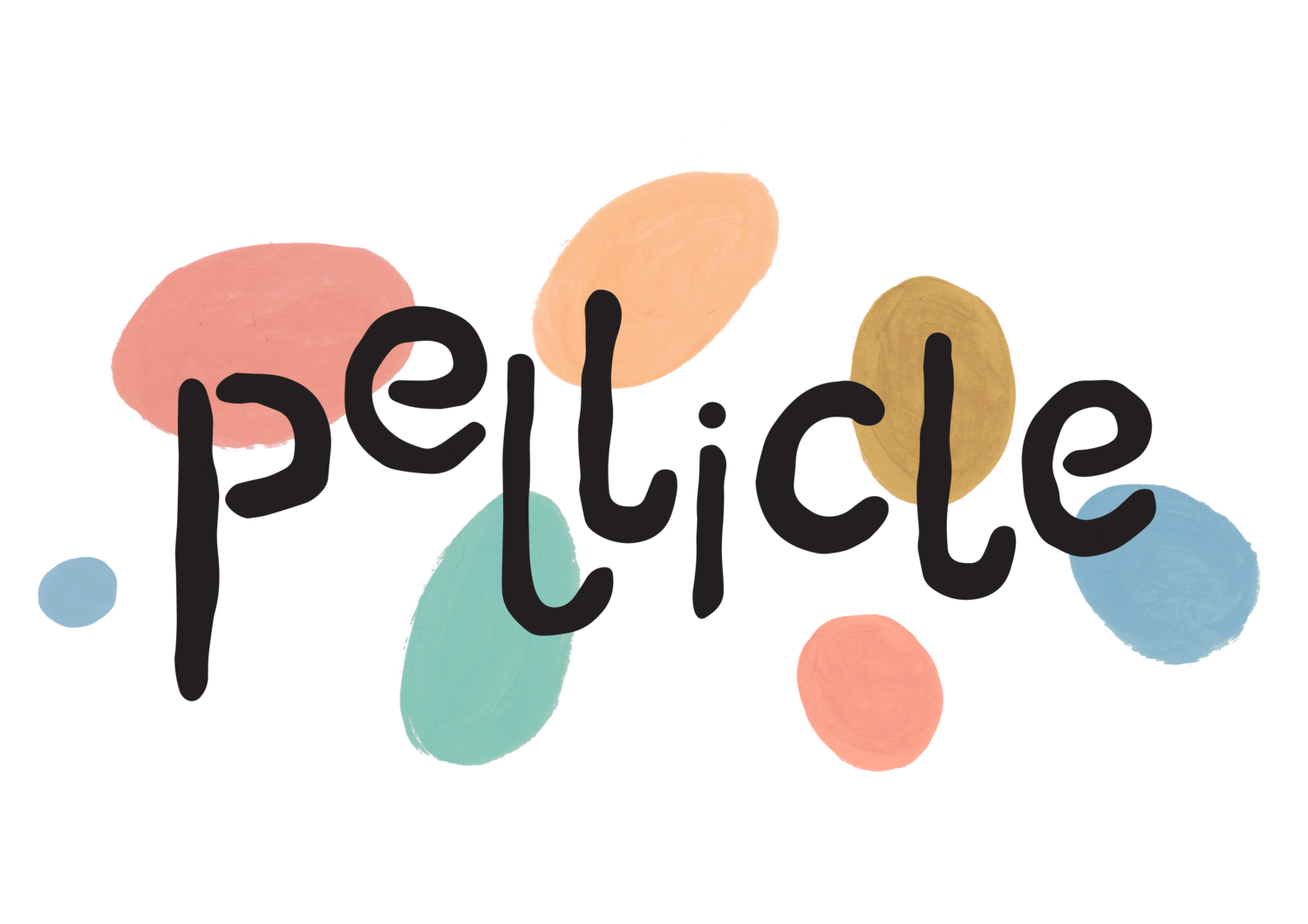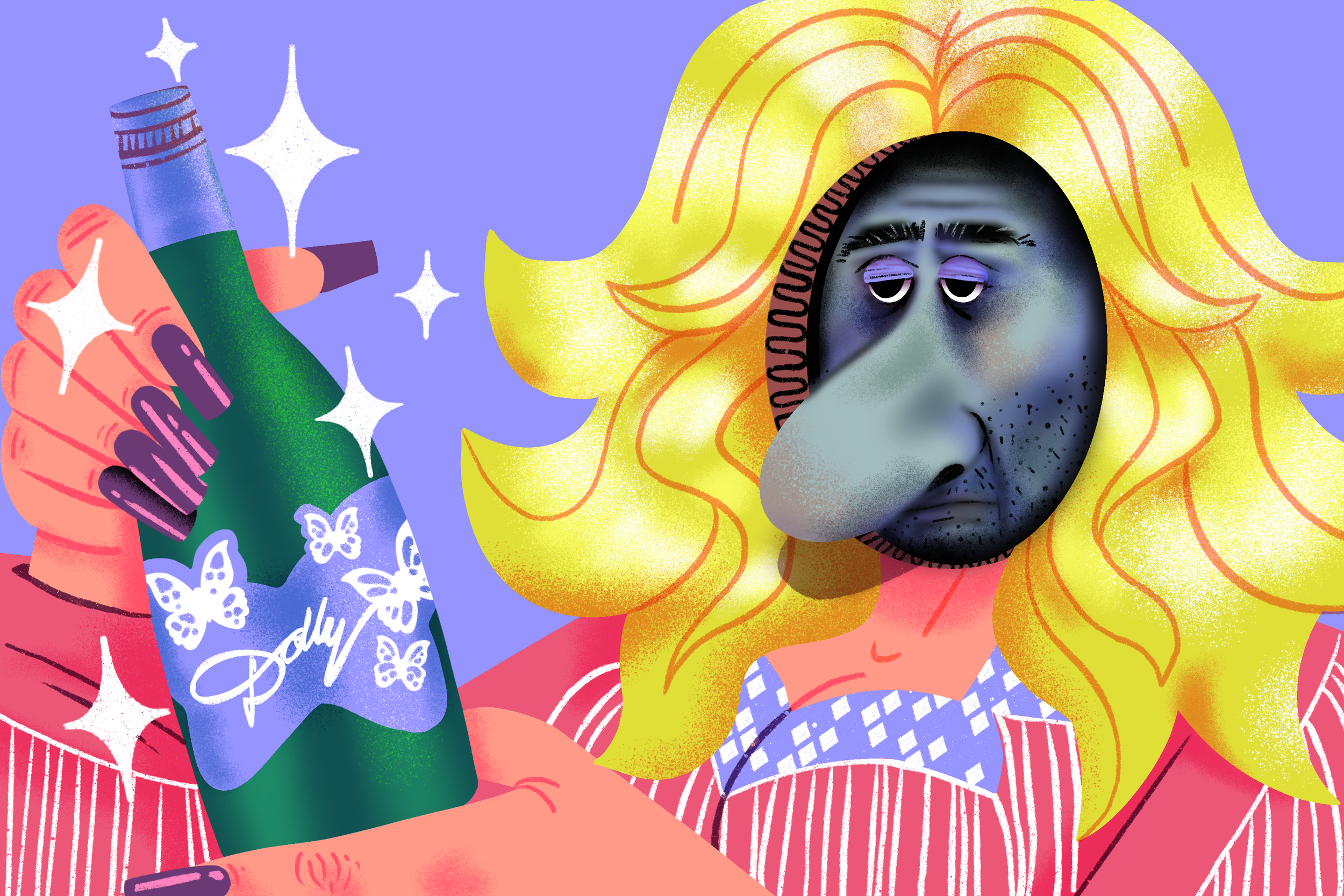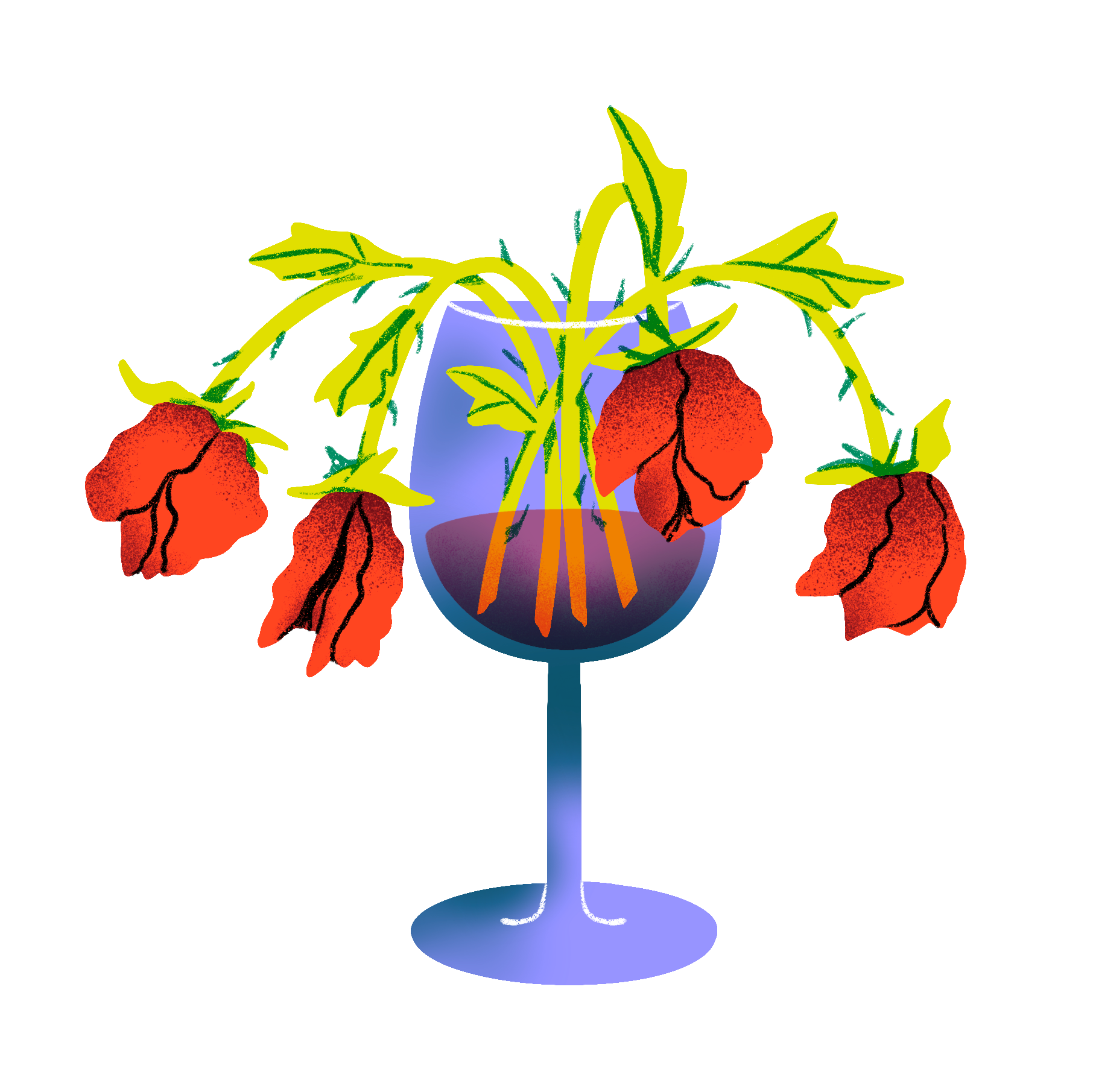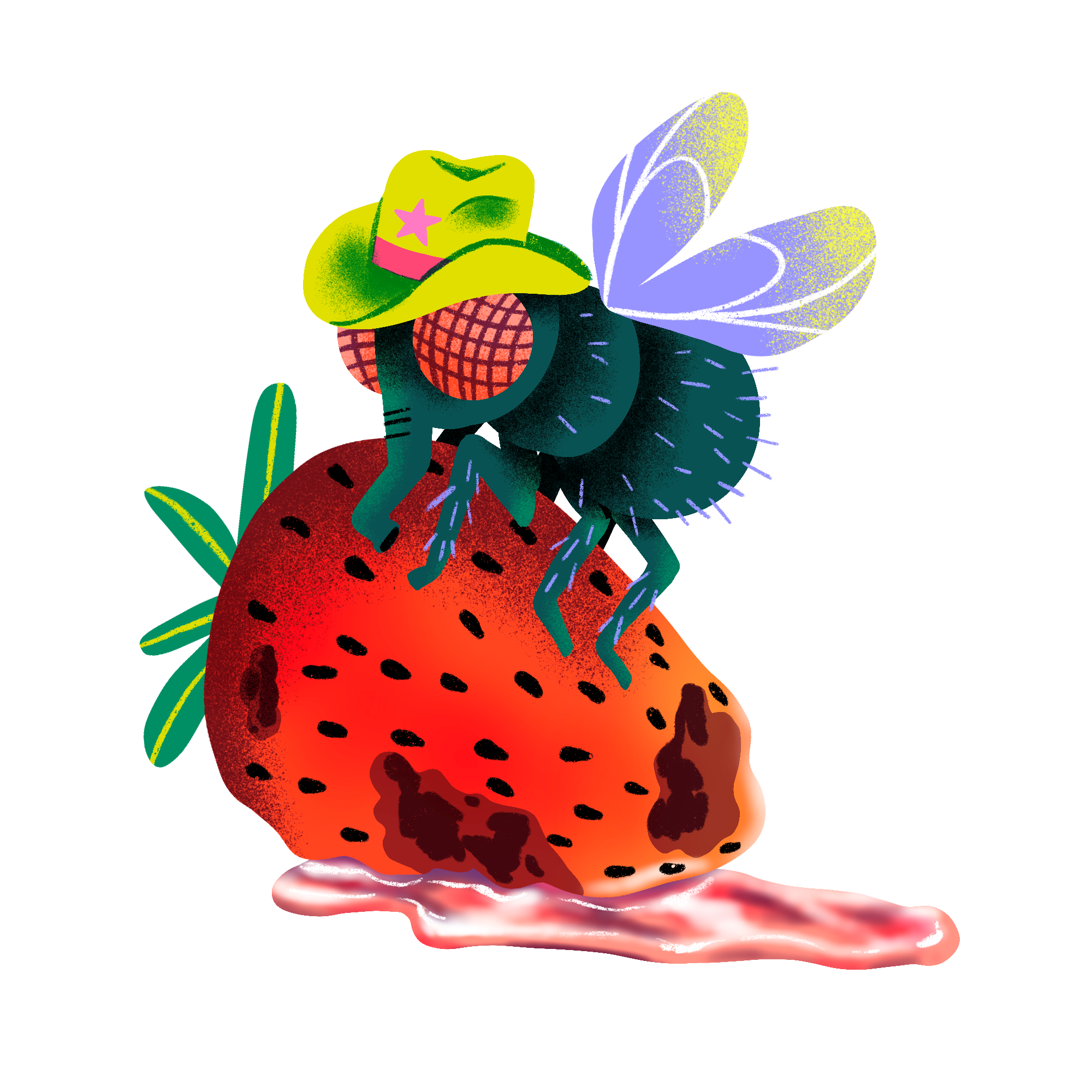The Infinity of Desire — Dolly Parton's Wine, the Peak of the Trash Pile
For an exhibit on trash, what would I display? Would I collect all the items I dispose of throughout my week? Would I try to replicate the feelings of inferiority and stupidity I work through when a text message doesn’t land as intended? Maybe not, too obvious. Perhaps there’s a different approach.
I think my starting point might be a cheap frozen pizza—Hawaiian, my favourite, do you even need to ask—hostage in its clingfilm. Then a screen showing hours of poorly made, exploitative reality television. Perhaps the floor would be plush leopard print and the seats red leather, the ceiling mirrored.
We’re getting somewhere now because look, there she is. With her platinum hair piled high, her heavy, smudged eye make-up, the skin of her cleavage exposed, her bright orange jumpsuit adorned with silver, tinselled tassels, her matching boots knee high. Trash incarnate, answering our call.
She takes her place in the exhibit, her description a quote in her own words, taken from a 2006 interview with CBS news:
“There was this woman that was very much a loose woman. I didn’t know what that meant, and I just told her how beautiful she was, ‘cause she had this beautiful yellow hair. She left a big impression on me, and I would talk about how beautiful she was and different ones would say, ‘Oh she’s just trash.’ And I thought, ‘That’s what I want to be when I grow up. I’m gonna be trash!”’
For no one understands how to harness the idea of trash better than Dolly Parton. That’s why she’s made it to my exhibit, and that’s why she’s the latest person to put her name to a brand of supermarket wine: Dolly Wines.
***
There are currently four different bottles in the Dolly Wines collection from *checks notes* Parton Family Cellars: a Chardonnay and a Pinot Noir—only available in the US—and a Prosecco and a Rosé—only available in the UK. I purchased mine from an Asda in Sheffield. The labels are in the shape of her signature butterfly, they glint a deep, midnight blue and the caress of smaller butterflies flutter nearby, their colour changing depending on the style they adorn, pink for rosé, gold for chardonnay and so on and so forth.
“Each sip reflects Dolly’s joyful essence and ability to spread warmth wherever she goes, the website reads, so let’s raise a glass together and bring a little sparkle to any occasion!”
Well, I’ll be the judge of that.
The Prosecco froths and foams in my glass like a bubble bath before falling to a very tepid, practically non-existent sparkle. If it wasn’t for me opening the bottle at my desk minutes earlier I’d say the wine had already been open a day or two. The flatness of the wine is disappointing, and the wine tastes harsher for it, all burnt lemon oil and lime pith and sad, sticky pear drops or forgotten haribo rings peeled off from the bottom of the bag. It is sickly and bitter and sad.
Illustrations by Eilis Dart
Maybe the rosé will show more promise. It pours that chic, candyfloss pink that some people might describe as salmon and others as rose gold. It smells like a chemicalised take on strawberries and a big vase of roses a day or two past its best, when the water is stagnant and the petals are about to turn. The smell is bad but the taste is much worse. Like bitter grapefruit and peaches bruising under too much exposure to the sun and the sad, diluted dregs of a forgotten bucks fizz.
I become as sad as the wines and I pour both bottles down the drain, where they belong.
***
I am always drawn to that which is not taken seriously. What is being said—what am I saying—when supermarket wine is denounced as trash? When Dolly Parton pins the aesthetics of her lifelong career around societal notions of trash? When this trio of trash, wine and Dolly combine in this way?
Let’s start with the wine. When you walk into a supermarket and pay the £9 I paid for a bottle of Dolly Parton rosé, what is it, exactly, that those nine pounds are paying for? Well, first of all the supermarket itself will take a cut, so there’ll need to be some profit margins factored in, let's say about 20% of the final cost (£1.80) at an estimate.
““If you can understand the intricacies of the Premier League... getting your head around wine is just as manageable.””
Then duty needs to be paid on the wine, Dolly’s rosé has an ABV of 12.5% so at the time of writing that’s £2.67 per bottle—this will rise from February 2025 to £2.77. That’s almost half of the bottle cost already counted for. Then there’s logistics, marketing and packaging to be factored in and we’ve not even got to the wine yet. That leaves us with a fraction of the price to pay for the time, land, labour and agriculture required to see a grape grown on a vine and that grape made into the finished wine. No wonder it tastes so bad.
Why, then, would a celebrity want to tap into something so cheap, something so lacking in aspiration, something so un-celebrity?
***
I’m watching a video by barista, YouTuber and co-founder of Square Mile Coffee Roasters, James Hoffman. He is discussing and dissecting celebrity coffee brands, and in his video he says a couple of things that interest me. He is talking very specifically about coffee but everything he says can, of course, be applied to wine. He mentions how these celebrity brands can be split into two categories: merch, and aspirational products.
I hadn’t considered the merch angle before, but he’s right. There are only so many t-shirts and tote bags you can buy from your favourite pop star. But a consumable such as coffee, or perfume or wine, readily available in a supermarket or high street chemist? An already established, dedicated fan base will keep coming back for more.
These aren’t Dolly Wines because they’re the wines Dolly drinks at home or because winemaking is Dolly’s great passion in life—she’s not drinking poorly carbonated Prosecco and she’s not working those harvests for that budget, come on now—they’re Dolly Wines because they’ve been designed with the sole purpose of making money from Dolly’s fans.
These people don’t give a shit about the wine and they don’t give a shit about you.
In the tasting element of James’ video he then speaks about the alignment of how a wine tastes with how its celebrity is perceived. “The taste of the coffee has to match the brand,” he says. “Your expectations of flavour are aligned with the brand in a way.” But is that the reality? Can a wine taste like the person it represents?
Not in Dolly’s case, that’s for sure. I’d expected her wines to shimmer and sparkle like she does, for the rosé to taste like sugared rose petals and juicy segments of watermelon, the Prosecco to be effervescent with freshly zested limes and the soft perfume of wildflowers catching in the breeze. I was let down. But how do other celebrity wines compare?
There’s nothing celebrities love more than making a rosé, so I try a few out of interest. Gary Barlow has one that is proudly “organic,” whatever the fuck that means these days. The wine is made from Tempranillo grapes grown in Spain’s Castile region and tastes astringent and acidic, the fruit is too intense, like softly rotting strawberries and the stringy white pith of a grapefruit.
““I’d expected her wines to shimmer and sparkle like she does, for the rosé to taste like sugared rose petals and juicy segments of watermelon...””
The rapper Post Malone has Maison No. 9 as his rosé brand, a blend of Grenache Noir, Syrah, Cinsault and Merlot from Southern France that tastes like the shadow of a rosé. It’s diluted and muted with maybe a whisper of blood orange and some strawberry petits filous fromage frais, but not a lot else.
Kylie Minogue also has a French rosé, just Grenache and Cinsault this time. Hers tastes more complex, like the soft flesh of a good peach and the fruity depths of a well layered trifle and those gummy sweets that come in the shape of teeth and lips. It is perhaps the only celebrity rosé I’ve met and liked, but the bar is on the floor. None of these wines taste like the glitz and glamour I’d associate with stardom and success.
Wine brands have been deliberately assembled. Labels try to speak to us, yet few people are in a position to listen. Wine becomes posh and complicated and impenetrable not because it is—if you can understand the intricacies of the Premier League or the mythology story arc in the X Files, then I think getting your head around wine is just as manageable—but because it benefits a class obsessed Britain.
Celebrity wines are monetising on that; a pop star’s name removing any need for attention or understanding of wine on our part. So people can keep blindly buying cheap wine that serves no one but the name emblazoned on the label—what a way to make a living! And we all deserve so much better than that.

















